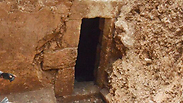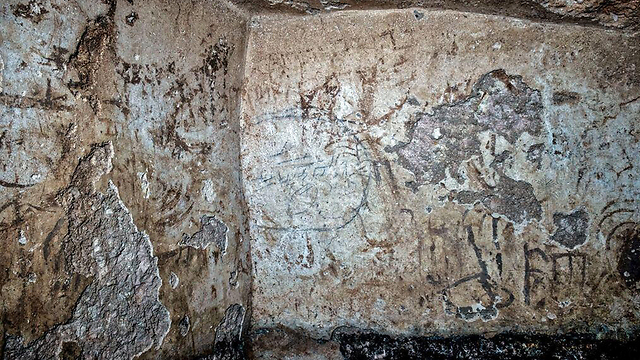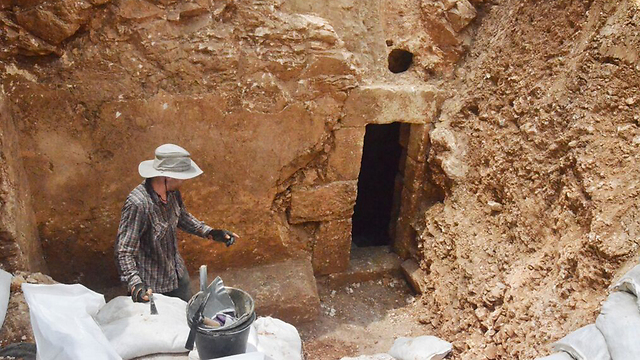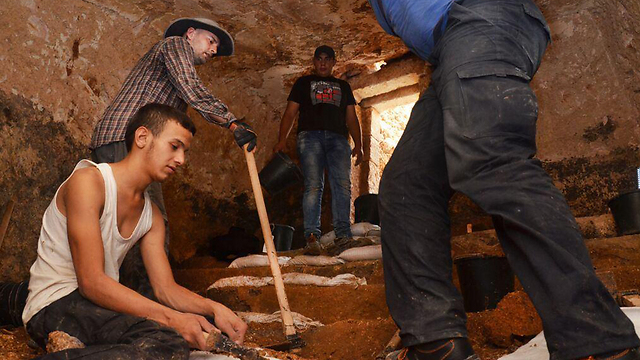
2,000-year-old mikveh with mysterious inscriptions found in Jerusalem
Ritual bath from Second Temple period found during construction of nursery school; archaeologists find Aramaic writing on wall, drawings of boat, palm trees and possibly a menorah.
A 2,000-year-old mikveh (ritual bath) containing a rare ancient message encoded in symbols and inscriptions was discovered two months ago during construction work for a nursery school in Jerusalem.
The mikveh, dating to the time of the Second Temple, was found in an underground cave during a routine Israel Antiquities Authority (IAA) inspection of the construction site. An anteroom, flanked by benches, led to the bath.
The walls of the mikveh were treated with ancient plaster and were adorned with numerous wall paintings and inscriptions, written in mud, soot and incising.

Among the symbols drawn on the wall are a boat, palm trees and various plant species, and possibly even a menorah. Those symbols are all common elements in visual arts in the Second Temple period.
The inscriptions are Aramaic and written in cursive Hebrew script, which was customary at the end of the Second Temple period.
"There is no doubt that this is a very significant discovery," said excavation directors Royee Greenwald and Alexander Wiegmann. "Such a concentration of inscriptions and symbols from the Second Temple period at one archaeological site, and in such a state of preservation, is rare and unique and most intriguing."
"The wall paintings are so sensitive that their exposure to the air causes damage to them," the IAA said. "As soon as the inscriptions were discovered the Israel Antiquities Authority began implementing complex conservation measures. They underwent initial treatment at the site, were removed in their entirety from the ritual bath, and transferred to the conservation laboratories of the Israel Antiquities Authority for further treatment and stabilization."

Archeologists don't yet know what the inscriptions mean, as their research is still in its initial stages.
According to the IAA, the drawing that is possibly a menorah is so extraordinary because in the time of the Second Temple, the people of Israel abstained from portraying the menorah, a sacred object.
Moshe Tur-Paz, the head of education at the Jerusalem municipality, said that "The archaeological and historical site that was exposed is of tremendous value to our identity as a Jewish people which might shine more light on the lives of our ancestors in the city of Jerusalem."

Researchers are now trying to figure out the connection between the symbols and the inscriptions and why they were drawn in the mikveh, of all places. They will also try to learn who painted them and why.
"Was it someone who jokingly wanted to scribble graffiti, or perhaps what we have here is a desire to convey a deeply spiritual and religious message, perhaps even a cry for help as a result of a traumatic event (the destruction of the Temple and the catastrophic war of 66-70 CE)?" researchers are wondering.











